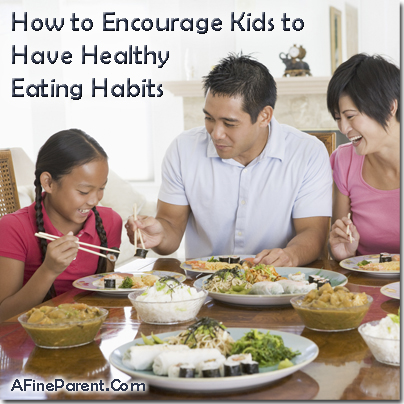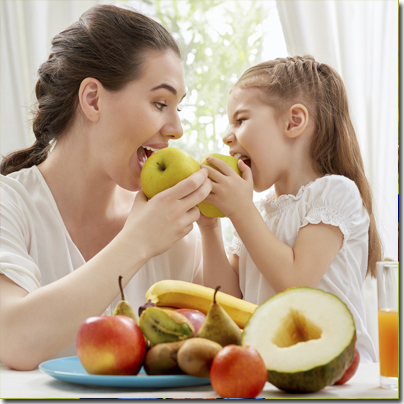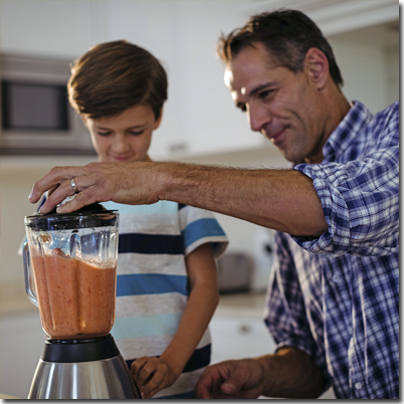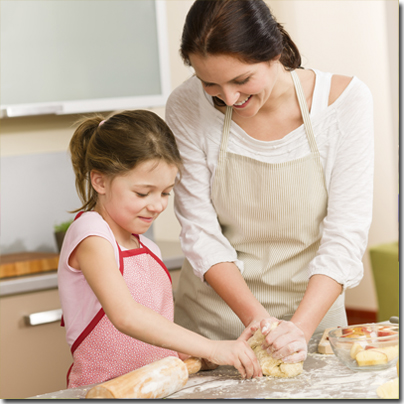 Have you noticed how some children (and adults), when presented with a buffet of food, make a well balanced, mostly healthy selection?
Have you noticed how some children (and adults), when presented with a buffet of food, make a well balanced, mostly healthy selection?
While others pass over anything resembling a fruit or a vegetable and load their plates with as much fatty, sugary food as they possibly can?
Why is this?
How come some kids have healthy eating habits while others gravitate towards junk food? Is there anything we can do to nudge our children into the former group rather than the latter?
I still remember taking my son to a birthday party when he was about seven. He totally ignored the sandwiches and fruit kebabs, although he would happily eat both at home, and loaded his plate with crisps, cupcakes and sausage rolls. I wasn’t going to intervene – it was a party after all – but after the second full can of fizzy drink, I found myself stepping in and saying ‘no more’.
It bothered me because, according to the Center for Disease Control and Prevention (CDC), obesity affects 39.8% of adults and 18.5% of children in the United States. Obesity-related conditions, such as heart disease, stroke, type 2 diabetes and some cancers are the leading causes of preventable premature deaths.
I wanted to give my children the tools to make healthy food and lifestyle choices, avoid obesity and its related health conditions and lead happy, healthy fulfilling lives as adults.
But I didn’t want to do it by banning foods, or always choosing for them!
And I definitely didn’t want to do it in a way that might cause body image issues, which are becoming increasingly prevalent among teens, and even preteens and younger children.
Body image issues can lead to poor self esteem and eating disorders such as anorexia nervosa, bulimia and binge eating. The National Association of Anorexia Nervosa and Associated Disorders (ANAD) estimates that at least 30 million people in the United States suffer from an eating disorder. As someone who experienced an eating disorder as a teenager, I wanted to make sure I did everything I could to protect my children.
So how do we tread the fine line between helping our kids develop healthy eating habits, while at the same time ensuring they have a positive body image, good mental health and avoid eating disorders?
Here are some of the things I have discovered in my quest to figure this out.
Set a Good Example
 As parents, we are our children’s most important role models, especially when they are young. The things we do and say have a greater impact than we often realize. There’s no point telling your child to eat a healthy diet if you live on processed foods, or to like and respect their body if you are always hating your own.
As parents, we are our children’s most important role models, especially when they are young. The things we do and say have a greater impact than we often realize. There’s no point telling your child to eat a healthy diet if you live on processed foods, or to like and respect their body if you are always hating your own.
Eating meals together as a family is a good way to model healthy eating. But make it about more than just the food. Enjoy each other’s company, and talk about what’s going on in your lives. If children see their parents enjoying a range of nutritious food, they will be more likely to follow suit.
Encourage your child to try different foods, but don’t make it a negative experience. If they don’t like something, that’s okay. If they refuse to try something new, don’t push too hard – offer it again another time.
Keep portion sizes fairly small when your children are too young to serve themselves. They’re more likely to try something new if the plate isn’t too full, and it’s better that they ask for more if they’re still hungry, rather than have them overeating a favorite food just because it’s there.
Don’t be afraid to share treat foods as well – just not all the time. If it’s a special occasion, like a birthday, have a cake and enjoy it. Don’t feel guilty and, most importantly, don’t let your child think there’s anything to feel guilty about!
As a child, I remember my mother was always dieting, and so were a lot of her friends. Some of them weren’t even overweight. They went on all sorts of fad diets and regularly talked about diet plans and how much weight they’d gained or lost. By the time I was a teenager, I thought dieting and wanting to lose weight was pretty normal.
Of course there are parents who do need to lose weight for health reasons, who have been told by their doctor to lose weight or who have to follow a strict diet for a medical condition. Obviously you need to follow the doctor’s instructions, but be careful how you talk about your body and your weight in front of your children.
Plan and Cook Meals Together
What better way to instill a love of good, healthy food than to get the children involved with the cooking? It may not be possible all the time with our busy schedules, but if you can try to set aside even one day a week where you cook from scratch, using nutritious fresh ingredients, your children will really reap the benefits.
 Let each child have a turn choosing what to cook. Take them shopping and let them pick the fresh produce. Look at the ingredients on packaged foods to choose ones without unnecessary additives.
Let each child have a turn choosing what to cook. Take them shopping and let them pick the fresh produce. Look at the ingredients on packaged foods to choose ones without unnecessary additives.
All through the cooking process, when it is safe, let them taste the ingredients as you go. Show them the difference in taste and texture between raw and cooked vegetables. Most children will happily tuck into something they’ve had a hand in preparing.
Not only does this help them learn about ingredients and where their food comes from, you are also helping them develop an important life skill – being able to prepare a healthy home-cooked meal – which will help your kids develop lifelong healthy eating habits. If you’ve not had much experience with cooking yourself, choose simple recipes to begin with – there are plenty online – and learn alongside your kids.
When my kids were little, I’d sit them on the bench and let them help with mixing or even just watch and taste as I prepared a meal. (Being the mashed potato taster was a highly sought after job.) As they got older, they started helping with things like grating, mashing and pouring, then chopping ingredients and cooking meals themselves. There were a few disasters along the way – almost completely raw Butter Chicken! – but nobody got hurt and they learned from their mistakes. Now, in their teens and early twenties, I have three fairly competent cooks who each cook a meal (and clean up) once a week.
Teach Your Children About Food and Where It Comes From
A few years ago Jamie Oliver did a series called food revolution, where he focused on nutrition in schools. As part of this, he asked high school students where they thought certain foods came from. Their knowledge was shockingly poor. You can watch the video here. We really can’t expect our children to make healthy food choices if they don’t even know where their food comes from.
As parents, we can use the time we spend cooking with our children to teach them a bit more about where food comes from and its nutritional value. A child who’s made guacamole, or seen a parent make it, will surely know it’s made from avocado!
Discuss why different foods are good for them and why they need to include a variety of different foods in their diet. Some suggestions:
- Carbohydrates give us energy. Complex carbohydrates take longer to break down so keep us going longer. Refined carbohydrates and sugars are okay sometimes but we don’t need very much of them.
- Protein helps build and repair strong bodies.
- Natural fats provide energy and important vitamins.
- Fiber helps keep our insides healthy and helps you poop easily. (Don’t be scared to talk about poop. Disgusting as it may sound, at a certain age it’s the fastest way to get their attention.)
- Vitamins and minerals keep us healthy and strong enough to fight off sickness.
- When foods are highly processed or have additives we don’t recognize, they lose most of their nutrition, and our bodies can’t use them as well.
Look at the nutrition labels and ingredient lists together and decide which foods provide the best nutrition.
Have Healthy Options Available for Snacking
Children get hungry between meals. They need to have snacks. All the nutrition education in the world is not going to help if healthy food is not available when they’re hungry.
Some foods to keep on hand for snacks include:
- Fresh fruit (or frozen or tinned)
- Vegetables like carrots and cucumber which can be cut into strips and dipped into hummus or peanut butter
- Cheese and crackers
- Yogurt
- Dried fruits, nuts and seeds
- Popcorn
- Trail mix
- Granola bars (homemade, or healthy store bought ones)
- Applesauce
- Edamame
- Milk
- Homemade muffins
- Toast
- Boiled eggs
- Leftovers from dinner
Highly processed packaged foods are often easier to grab and eat. Having less processed food and more fresh food readily available will help them make good choices.
Don’t Ban Foods and Avoid Labeling Food as Good or Bad
 Unless they have a food allergy, it’s important that children are free to try any food they want to. Treats, in small amounts, can be part of a healthy diet and it’s important to enjoy food. Make a cake or dessert together and look at what goes into them and why your body doesn’t need too much of that type of food.
Unless they have a food allergy, it’s important that children are free to try any food they want to. Treats, in small amounts, can be part of a healthy diet and it’s important to enjoy food. Make a cake or dessert together and look at what goes into them and why your body doesn’t need too much of that type of food.
Don’t be tempted to try to hide something like vegetables in a cake. It sends the message that vegetables don’t taste good and require disguising to be eaten. And even if you do manage to get your kids to eat them, you haven’t actually taught them to develop healthy eating habits. Of course, if you have a great recipe that includes beetroot in a chocolate cake, for example, go ahead and use it. Just be upfront about the ingredients and what they add to the final product.
Sometimes, well-meaning parents try to force their children to eat ‘good’ foods, like vegetables, by not letting them leave the table until their plate is empty. I can see two problems with this. First, they’re going to be turned off that vegetable, which is the opposite of what you’re trying to achieve (it probably won’t taste great after it’s been sitting there a while). And second, even if you are successful in getting them to eat it, you’re teaching them to ignore their body’s signals and eat whatever is there.
I work as a teacher and have seen what can happen when parents try to ban certain foods, usually sugary or party foods. If a child is not allowed to eat something, it increases that food’s value to them and makes it more desirable. Then, when they do get access to the food, and they will eventually, they’re going to want to eat more of it, which can lead to bingeing and an unhealthy attitude towards food. (Food allergies are a different issue and are best handled by careful explanation, and providing an alternative treat for younger children.)
I can remember my mother telling me I’d get fat if I ate certain foods. And not only the foods that you’d expect, like sweets and pastries, but also foods that you’d normally consider pretty healthy for children, like full cream milk. (I used to love milk as a child, but now don’t enjoy it and rarely drink it, although I do consider it to be a healthy food.) That was when fat was considered the enemy.
Today, we hear a lot about the evils of sugar and other carbohydrates. While it’s certainly true that a lot of people consume more sugar than is good for them, I don’t believe it’s useful to label any foods as inherently bad. It’s better to focus on an overall healthy diet. Treats are okay but our main diet is built around the nutritious foods our bodies need.
Focus on How Their Body Feels and Performs, Not on How it Looks (Or Worse, What They Weigh)
When I was about 12 or 13, my mother called me over and asked me how much I weighed in front of several other women. We were at a pool party and they were sitting around chatting while watching their children play in the water. I was wearing a bikini and it was pretty obvious to me what they’d been talking about. I knew exactly how much I weighed, and I wasn’t even overweight, but I still felt the need to take off a few pounds.
Don’t make a big deal about how much your child weights. You can weigh them from time to time and keep a record, along with their height measurement. You do need to know their weight if they need medication, or to tell the doctor. But that’s it. Don’t make judgements, don’t compare them to others and don’t broadcast it.
Even if your child is overweight, putting them on a diet is rarely helpful and can lead to disordered eating later. A focus on good food to fuel the body and getting the whole family to eat better is still the best approach. Doctors at WebMD recommend that with young children the goal is not to lose weight, but rather to maintain their current weight and allow them to grow into it. With teens, unless otherwise advised by a doctor, gradual weight loss that doesn’t leave them feeling hungry or deprived is the most effective.
 When talking to children about their bodies, talk about how they work and how they feel. Tell them nutritious food fuels their body and gives them energy to be able to do the things they want to. Calcium gives them strong bones, vitamins help fight off sickness, protein for muscles and so on. Less nutritious food doesn’t allow them to perform at their best and that’s why it’s not a good idea to eat too much of it. Don’t say it will make them fat.
When talking to children about their bodies, talk about how they work and how they feel. Tell them nutritious food fuels their body and gives them energy to be able to do the things they want to. Calcium gives them strong bones, vitamins help fight off sickness, protein for muscles and so on. Less nutritious food doesn’t allow them to perform at their best and that’s why it’s not a good idea to eat too much of it. Don’t say it will make them fat.
Inevitably children will eat too much of the wrong food – the party candy or treats that will make them feel sick or even vomit. Use this as a teaching opportunity – point out that their body didn’t like having so much of that food and it’s letting them know.
A Healthy Lifestyle is About More Than Just Food
Helping kids develop healthy eating habits is an important part of a healthy lifestyle but it is not the only part. Some other things to consider are:
- Does your child get enough exercise? Encourage active play or help them find a sport or other physical activity they enjoy. Set a good example and be active together.
- Does your child spend too much time in front of a television or other screen? Suggest other activities.
- Does your child get enough sleep? If not, this will have a negative effect on school, relationships, exercise and yes, food choices.
- Are they anxious or stressed? Managing stress is important for everyone, and children are no exception. Encourage them to pursue activities they enjoy and that give them pleasure. Encourage them to build good friendships and be kind to others.
In the end, I have found that when approached in a wholesome manner, there is no conflict between teaching kids healthy eating habits and having a positive body image.
We just need to remember to frame it as respecting and caring about our bodies, and then follow through with examples of choices we make on a day-to-day basis. They’ll want to give their bodies the best fuel possible so they can stay strong and healthy and able to do all the things they love.
The 2-Minute Action Plan for Fine Parents
It might help to ask yourself these questions:
- What example am I setting for my children with regard to healthy eating? Am I always complaining about my body, going on diets, restricting foods then bingeing? Do I eat mostly healthy foods? Try to project a positive attitude towards food.
- How do I talk to my child about their body? Do I impose value judgements about weight or other physical characteristics? Limit comments about their body to how it works and how they feel.
- Are mealtimes at our house enjoyable? Or a battle to get the children to eat foods they don’t want to? Aim for a relaxed attitude around food.
The Ongoing Action Plan for Fine Parents
Plan to cook a meal together. Choose a day when you’ve got plenty of time. Ask your child what they would like to make, find a recipe, go shopping for the ingredients and cook it together. Then enjoy eating it together with the rest of the family. Make it a relaxed fun activity and don’t worry about how much your child does or doesn’t eat.
Grab some healthy snack options to have available for when your child is hungry outside of mealtimes, and gradually reduce the less healthy snack options in your house.
Take opportunities as they arise to talk about where food comes from and what our bodies use it for. If you have the opportunity to visit a farm to see where food is grown, even better.
Make a commitment not to talk to, or in front of, your child about dieting, losing weight or what you don’t like about your body (or theirs).
The first place where kids learn most of the time were at home. Undeniably, children nowadays were already used of eating unhealthy foods. Practicing healthy eating habits at home is great to start with, as always!
Couldn’t agree more! It’s up to us to give them the best start possible.
I’m having kids and I love your sharing, it’s really helpful for me. Thank you so much.
Thank you 😊
Making kids eat healthy food is a task in itself, but this article will surely help us, change the eating habits of our kids, I will surely share it with my friends and family as well for their future reference. thank you for sharing such great content with us.
Thank you – so glad you found it helpful.
Thank you. I really enjoyed this well balanced approach to healthy eating and body image.
I love these articles! Thank you!
Thank you. I’m glad you enjoyed it.